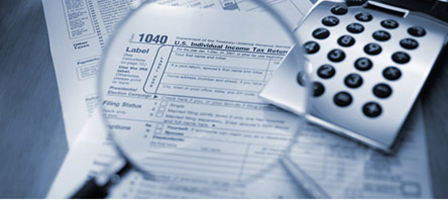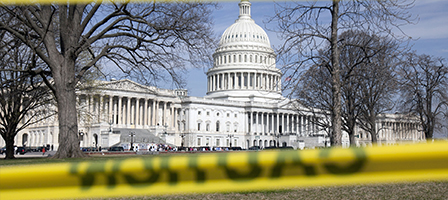Were You the Victim of a Qualified Disaster? There Is Tax Relief Available
- Find out more about current legislation for major qualified disasters.
- Learn the definitions of commonly used terms in regard to disasters.
- What do you know about qualified disaster distributions?
- Learn about re-contributing withdrawals for home purchases.
- Find out how the new legislation affects retirement plan loans.
- Learn more about loss limitations revisions.
- Discover tax relief available for non-itemizers.
- Find out how the Employee Retention Credit could help your business.
- Learn more about other disaster area tax issues.
Most of us will always remember the year 2020, as much as we may like to forget it. On top of the COVID-19 emergency, street protests (both peaceful and not), and hotly contested election races, the U.S. has had numerous natural disasters – hurricanes, an unprecedented number of wildfires, severe windstorms, flooding, and what seems like everything except a plague of locusts (so far, the gigantic swarms of the insects that have invaded Africa and the Middle East haven’t made it across the Atlantic).
A few definitions
Congress typically passes legislation to provide some temporary tax relief to the victims of major disasters. Recently, Congress did just that when it passed the Taxpayer Certainty and Disaster Tax Relief Act of 2020. Fiducial has the scoop on the tax benefits covered by this bill. But first, a few definitions:
“Qualified disaster area” means any area in which a major disaster was declared by the president, during the period beginning on January 1, 2020, and ending on February 25, 2021, if the incident period of the disaster began on or after December 28, 2019 and on or before December 27, 2020. However, any area in which a major disaster was declared only because of COVID-19 is not included.
“Qualified disaster zone” is the portion of any qualified disaster area that the president, during the date parameters noted above, determined to warrant individual or individual and public assistance from the federal government under the Robert T. Stafford Disaster Relief and Emergency Assistance Act because of the qualified disaster in that disaster area.
“Incident period” means, with respect to any qualified disaster, the period specified by the Federal Emergency Management Agency (FEMA) as the period when a disaster occurred. (However, for the purposes of this act, that period shall not be treated as beginning before January 1, 2020, or ending after January 26, 2021.)
Need a listing of affected areas and dates of all storms, fires, and other disasters in 2020 in federal disaster areas? Go to https://www.irs.gov/newsroom/tax-relief-in-disaster-situations.
Taxpayer Certainty and Disaster Tax Relief Act of 2020 Highlights
Qualified disaster distributions
If you have sustained an economic loss because of a qualified disaster, you may withdraw from your eligible retirement plans – such as a 401(k) or 403(b) – and IRAs up to $100,000, less the aggregate amounts treated as qualified disaster distributions in prior years. You may do this without paying the 10% early-withdrawal penalty that applies when withdrawing under age 59½. The distribution is still taxable, but if you choose to, the income from the qualified distribution can be spread over a three-year period beginning with the year of distribution, rather than you paying all of the tax in the distribution year.
Re-contribution option
Further, you can re-deposit any amount of the qualified disaster distribution in one or more re-contributions over the three-year period. This period begins on the day after the date of the distribution.
For example, let’s say you take a qualified disaster distribution of $30,000 from your IRA on Dec. 10, 2020. Then you opt to spread the tax over years 2020, 2021, and 2022 by including $10,000 of the distribution amount in each year’s return. In 2022, you are financially able to re-deposit the $30,000 to your IRA, which you do on Nov. 1, 2022. You would then need to amend your 2020 and 2021 returns to remove the $10,000 income from each year. Then, you could claim a refund of the taxes paid on those parts of the distribution. You do not need to report any of the distribution on your 2022 return.
Waived 20% withholding requirement
Normally, a 20% withholding for income tax would apply to a retirement plan distribution. This 20% withholding rule will not apply to a qualified disaster distribution.
Distribution timing
Only distributions made on or after the first day of the incident period of a qualified disaster and before June 25, 2021, can qualify.
Special rule for individuals affected by more than one qualified disaster
The $100,000 limitation applies separately to distributions made with respect to each qualified disaster.

Recontributing withdrawals for home purchases
If you are under 59½, the general rule is that you’ll owe a 10% penalty on the taxable part of a distribution from an IRA (or an employer’s retirement plan). However, this 10% early-withdrawal penalty doesn’t apply to a distribution (lifetime maximum $10,000) from an IRA used by a first-time homebuyer to pay the qualified acquisition costs for a principal residence, if the funds are spent within 120 days of receiving the distribution.
When disaster strikes, the taxpayer’s plans to purchase or construct a home sometimes are upended, and the funds from the withdrawal can’t be spent during the allotted time period.
To prevent the 10% penalty from kicking in when this happens, the act provides that any individual who received a qualified distribution during the period beginning 180 days before the first day of the incident period of a qualified disaster and ending 30 days after the last day of the incident period may make one or more contributions to an eligible retirement plan that total no more than the amount of the qualified distribution. The re-deposit must occur during the period beginning on the first day of the incident period of the qualified disaster and ending on June 25, 2021.
To qualify to make the recontribution, you must have intended to use the amount distributed to purchase or construct a principal residence in a qualified disaster area. However, the qualified disaster in that area must have made this impossible.
If the taxpayer recontributes the funds, then they can amend their tax return for the year the distribution tax occurred for a refund of the taxes paid on the withdrawal.
Increased limit on retirement plan loans
Generally, a loan from a qualified employer plan to a participant or beneficiary is treated as a plan distribution. However, the loan amount must equal at least the lesser of $50,000 or half of the present value of the employee's nonforfeitable accrued benefit under the plan. An exception allows a loan of up to $10,000 without regard to the accrued benefit rule. You must repay this kind of loan within five years. Note: You may use a longer repayment for a principal residence plan loan.
The act eased the requirements for qualified individuals who sustained an economic loss because of the qualified disaster, by doing the following:
- Increasing the maximum amount a plan participant or beneficiary can borrow from a qualified employer plan from $50,000 to $100,000. The “half of present value” test was changed to “the present value of the nonforfeitable accrued benefit of the employee.”
- Allowing a longer repayment period, generally of one year.
To be eligible for this relaxation of the plan-loan rules, the individual’s principal place of abode at any time during the incident period of any qualified disaster must have been located within the qualified disaster area of the qualified disaster.
Loss limitations revised
Generally, to deduct a personal casualty or disaster loss, each event must be reduced by $100, and the overall loss must be reduced by 10% of the taxpayer’s adjusted gross income. The act modifies these rules by eliminating the 10% reduction and increasing the $100 reduction to $500.
Qualified disaster relief for non-itemizers
The personal casualty loss deduction is part of the itemized deductions claimed on Schedule A, so normally, a taxpayer who doesn’t itemize because their standard deduction is greater than the total of their itemized deductions won’t have any tax benefit from the casualty loss.
However, under the act, a taxpayer claiming a “net disaster loss” who does not itemize their deductions may add their “net disaster loss” to their standard deduction.
Employee-retention credit
The act provides an employee-retention credit for an employer that conducted an active trade or business in a qualified disaster zone at any time during the incident period of the qualified disaster AND when the trade or business became inoperable as a result of damage sustained because of the qualified disaster at any time during the period beginning on the first day of the incident period and ending on December 27, 2020.
The credit is 40% of the qualified wages of each eligible employee of the eligible employer for the taxable year. A limit of $6000 of qualified wages applies for any individual. As a result, the maximum credit equals $2,400 per employee.
To be an eligible employee, the employee’s principal place of employment with the employer just before the qualified disaster must have been in the qualified disaster zone.
Qualified wages are wages paid by the employer starting when the trade or business became inoperable at the principal location where the employee was employed and through the date when the business resumed significant operations at the employee’s principal place of employment or, if earlier, 150 days after the last day of the incident period of the qualified disaster.
- Qualified wages include wages paid without regard to whether the employee performed no services, performed services at a different place of employment than their principal place of employment, or performed services at their principal place of employment before significant operations resumed.
- Wages paid to the employer’s relatives or wages that the employer uses in computing other tax credits, such as for the Work Opportunity Tax Credit, Research Credit, and others generally do not count as qualified wages.
Other Qualified Disaster Issues
Below are other items already in the tax code that those affected by qualified disasters should know:
Extended deadlines
The IRS has the authority to postpone certain tax deadlines by up to one year for taxpayers affected by a federally declared disaster. Examples of deadlines the IRS will postpone in disaster areas include those for filing income, excise, and employment tax returns; paying income, excise, and employment taxes; and contributing to IRAs.
When to claim qualified disaster losses
Special rules apply to losses that occur in areas that the president declares eligible for federal disaster assistance. The losses must result from the disaster. The FEMA website lists the designated disaster areas. Taxpayers may elect to claim the loss
- On the return for the year when it occurs, or
- On the preceding year’s return (either the original or an amended return).
When to take the loss depends upon a number of factors. You should analyze this carefully to determine which year will be the most beneficial. Some of the factors to consider include the tax brackets for each year, the need for immediate cash, the effect on self-employment tax for those with business-disaster losses, and whether the loss will be used up against other income for the year.
If you do not fully use the disaster loss in the year you first deduct it, it can create an NOL. You can deduct the NOL on either a prior year or future year return. This will depend on which year the loss occurred.
Insurance Proceeds
A taxpayer whose principal residence (or its contents) becomes damaged in a disaster can qualify for special tax treatment regarding certain insurance proceeds received as a result of the casualty. To qualify, the residence must be located in a presidentially declared disaster area.
Have you been in a qualified disaster and have questions about the new provisions in the 2020 disaster legislation? Want more information about the special tax rules for claiming disaster losses? Call Fiducial at 1-866-FIDUCIAL or make an appointment at one of our office locations to discuss your situation.
Ready to book an appointment now? Click here. Know someone who might need our services? We love referrals!
For more small business COVID-19 resources, visit Fiducial’s Coronavirus Update Center to find information on SBA loans, tax updates, the Paycheck Protection Program, paid sick and family leave, and more.









